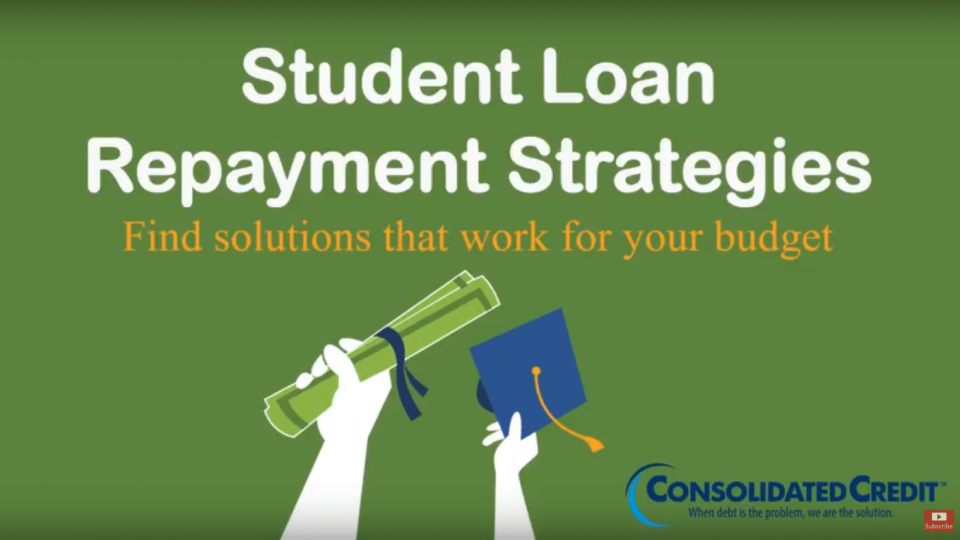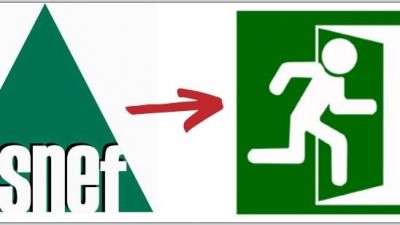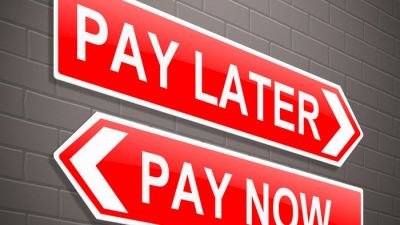
We will give you all the information you need to start repaying your debt using the snowball method.
If you have debt, you’ve probably wondered how to get rid of it. If the amount remaining is large and the daily economy is tight, active action to get rid of debt is still a huge challenge.
Many also find it difficult to get started.
- Which strategy should you choose?
- Where can you find extra money to repay your debt?
- How do you structure your payment plan?
In this guide, you will find all the information you need to start a targeted payment plan using the snowball method.
Try our debt calculator
Debt repayment
- Myth 1: Shortening the loan period is impossible
- Myth 2: I have to pay the same monthly amount to all my existing debt accounts
- Myth 3: Focusing on debt repayment makes no sense
- Myth 4: Adhering to a bank’s payment plan is the best strategy
- How to start a targeted debt repayment
- This is why you need your own payment plan
snowball method
- Snowball method in a nutshell
- One of the best methods of debt repayment
- How to get started in the snowball method
- How to get the most out of the snowball method
Debt repayment
Myth 1: Shortening the loan period is impossible
For most people, running a daily economy is already challenging enough. Mortgage monthly payments, unsecured loans, credit card debt, or a combination of all of these make it seem completely impossible to repay the loans.
We are here to tell you that this could not be further from the truth. Remember that you are personally responsible for your debt. While you probably have a payment plan with your bank, it is not binding on you under any circumstances.
In fact, shortening the loan period is just a matter of a higher monthly repayment installment. This is difficult to implement, and it means making a lot of awkward decisions for you. However, you have the power and opportunity to do something about your debt.
If you want to shorten your loan period, you need to do two things. First, you need to make a plan regarding how you plan to repay your loan. Second, you need to stick to your plan. That’s all.
Myth 2: I have to pay the same monthly amount to all my existing debt accounts
The idea makes sense If you consolidate all your accounts into one large loan, it makes sense to repay them at a steady pace. Unfortunately, this is not the best way to get rid of debt in the past.
If you pay the same monthly amount into all of your remaining debt accounts, you will treat them as if they were costing you the same amount. However, if you have both secured and unsecured loans, personal loans, quick leverage, and credit card debt are always the most expensive loans.
After all, it’s about loan interest rates. The higher the interest rate, the more expensive the loan. The interest rate represents the price you pay to hold the loan – it is a type of rent you pay to your lender. When you look at it from this perspective, it makes a lot more sense to get rid of the highest rent first.
Studies show that it is financially most profitable to focus on one loan at a time. It is possible that this will also help develop motivation, which will help you achieve debt relief earlier.
Myth 3: Focusing on debt repayment makes no sense
Far too many borrowers are unaware of their debts. Monthly withdrawals come and go, usually as an automated event. For some, dealing with debts is simply too difficult because of their size.
Nonetheless, it is a fact that our money tends to be lost, whether we define it for a purpose or not. It can be savings, consumption or monthly bills, but if we have money, we tend to use it. Therefore, achieving debt-free requires a conscious decision to pay off the remaining debt accounts.
When you become aware of your debt and understand how it strains your personal life, it will be easier to get rid of it. This will create a motivation for yourself that will encourage you to spend more of your income to repay the loan.
From a long-term financial perspective, focusing on debt repayment is important. When you are debt-free, you improve your credit rating and make your daily life more carefree.
Myth 4: Adhering to a bank’s payment plan is the best strategy
Of course, we trust that our creditors know what they are doing – and that they are doing the same. The bank will always make a thorough financial assessment of you as a loan applicant. If the acceptance of the application is not justified, the bank will not do so either.
However, it must also be remembered that banks make a lot of money with their loans. This is especially true for lenders that offer unsecured loans such as personal loans, instant loans and credit cards. In these, the interest rate is usually surprisingly high and interest income goes straight into the bank’s pocket.
Therefore, a lender may well offer you a payment plan that may not be the best option for your personal finances. However, if you are in need of money, this fact is easy to ignore. However, it is important to keep in mind that debt is bad for your finances.
From the point of view of the well-being of the personal economy, the rule of thumb for both secured and unsecured loans is to get rid of debt as quickly as possible. If you succeed in this, the loan will cost you less. In other words, you should always try to pay more than what the loan company requires of you.
Tip: How to start a targeted debt repayment
So we have found that being aware of debts and getting rid of them quickly benefits personal finances. If you are motivated to pay off your debt, you can start with a few easy steps. Following these will make it much easier to launch a payment plan.
Step 1: Create an overview
First, you need to create an accurate overview of your debt situation. Record the amounts of outstanding debt, interest rates, and the minimum monthly amount required by loan companies. Keep debt accounts separate and don’t focus too much on the total amount of debt remaining. You should approach your creditors one account at a time anyway.
Step 2: Choose a good strategy
Without a payment plan, you will not go anywhere. Therefore, you need to choose a good strategy to pay off the debt. In this guide, we focus on the snowball method, which has proven to be very effective in many experiments and studies.
Step 3: Create a budget
Before you start repaying your debt, it’s important to know how much you can realistically use to pay off your debt on a monthly basis. Remember to be strict with yourself when drawing up this budget. The more money you spend on it, the faster you will achieve debt, which in turn will save you money in the long run.

Tip: For this reason, you need your own payment plan
Once you have got the three things mentioned above in order, it is important to make a payment plan for your debt. As we have already seen, this is the only way to move towards economic freedom in a targeted way. Both theoretically and practically, it is about motivation.
Getting rid of all debt is tricky. Therefore, you need to make a list of things that will help you maintain your motivation throughout the payback period. It can be something specific you want, a project you want to implement, or just a better financial situation in everyday life.
The payment plan also divides the debt into more manageable amounts. If you focus on all your debts with one lump sum, it will feel almost impossible to get rid of it. The strategy allows you to work on your debt with smaller amounts.
By doing this, you will achieve two things. First, you can get rid of your debt faster when your debt accounts look and also are more manageable. Second, you do a great service to your motivation – remember that you need a lot of motivation to get rid of debt.
How to use the snowball method to repay the loan
Snowball method in a nutshell
The snowball method is a recognized debt repayment strategy. Economists around the world have studied it and given it its recommendations. If long-term motivation causes you difficulty, this method may be a good option for you.
In the snowball method, you can think of your debt as if it were a snowball. You start small and move on until the snowball is big. Loan amounts are the guiding factor here. In other words, you start with the smallest debt account and decide on the largest.
The snowball method is especially useful for those who have more than one debt account they want to get rid of, and especially if either of these is unsecured. Suppose you have the following debts in your name:
- Mortgage loan: EUR 120,000
- Credit card debt: EUR 3,240
- Quick tip: EUR 59
In the snowball method, you start with a quick tip, after which you move on to credit card debt and then to a mortgage. The method works because you start with the easiest to manage debt portion.

One of the best methods of debt repayment
Studies in the United States have proven that the snowball effect is the optimal strategy for debt repayment. It turned out that using this method, debts were settled 15% faster than if the various debts were paid off evenly.
There are several explanations for these results, but the researchers concluded that it was primarily due to human psychology. People are more motivated by short-term rewards than long-term rewards.
When you start with your smallest debt account first, you’ll probably pay it off pretty quickly. The resulting sense of accomplishment encourages us to move on to the next debt account.
Here again is the question of how we motivate ourselves. Suppose you have a strong desire to get rid of your debts. If you find the adversities you face along the way manageable, you’re likely to move on.
The snowball method also maintains a focus on one debt account at a time, which has been shown to be beneficial. When you split a debt into smaller parts, it’s easier to start settling it. This in turn motivates you to set aside as much money as possible to repay the debt.
How to get started in the snowball method
We have developed a debt calculator that is tailored to individuals looking for a payment plan for their debt. In it, you can choose the snowball method for your strategy.
To use the counter, you need the following information:
- The amount of the remaining loan in each debt account
- Loan interest rate (you can find this on your monthly statement or by calling your lender)
- Minimum monthly installment on each loan
- Monthly budget for loan repayment
- Payment plan start date
Once you have this information cleared, all you have to do is enter it into a counter that will create a payment plan for you based on it.
In addition to the monthly amounts, the calculator provides you with information to motivate yourself to repay the loan. First, you can see exactly how much money you’re saving by using your payment plan.
“Using the snowball method, you will save 541 EUR in interest expenses and achieve debt-free 8 months earlier. You are debt free 4/2022. ”
In the example above, you will save EUR 541 by using the snowball method for the entire debt repayment period. You will also find that you will get your debt repaid eight months faster than if you paid the lender only the minimum amount each month.
These factors should motivate you – especially on days when you have a hard time staying on schedule.
How to get the most out of the snowball method
Follow your strategy conscientiously
Once the unsecured debt is resolved, it is easy to return to automatic monthly payments on the insured loan. Paying off unsecured loans is a sensible step in the right direction for the economy. However, you will save the most money if you set aside a monthly repayment budget to repay secured loans as well.
Motivate yourself in a way that works
Getting rid of debt, especially when it comes with a mortgage, takes time. If you manage to stick to your repayment budget, you need genuinely effective motivation, whatever that meant to you. Maybe you can finally make your dream vacation come true when you achieve debt relief? Are you dreaming of a kitchen renovation? Are you saving for your dream car? Whatever your dream, you need to make sure you are motivated by something other than financial interests.
Stay realistic
One of the most common ways to fail to repay long-term debt is to start with a plan that is unrealistic from the start. When setting your budget, don’t forget to think carefully about whether the amount is realistic for you. Have you taken the savings into account? What about unexpected expenses? If you start with a shaky plan already, it won’t last.
Start repaying your debt today. Using a snowball strategy to repay your debt will save you both time and money.




